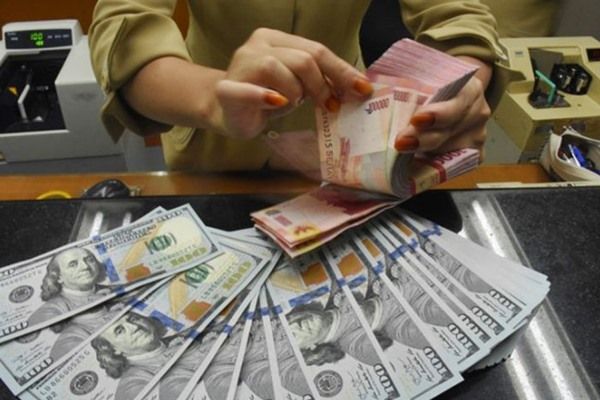The government debt position as of September 30, 2022, is Rp 7,420.47 trillion. This figure increased by Rp. 183.86 trillion from the previous month’s position of Rp. 7,236.61 trillion. This data was conveyed directly by the Ministry of Finance. Even though the figure is increasing, the debt ratio is still safe.
In this way, the ratio of government debt to gross domestic product (GDP) rose to 39.30% as of September 2022. The Ministry of Finance claims the debt ratio is still safe because it is still far from the maximum limit specified in the law, which reaches 60% of GDP.
“There was an increase in the nominal amount and debt ratio at the end of September 2022 when compared to last month. However, the increase was still within safe, reasonable, and controlled limits accompanied by optimal portfolio diversification,” wrote the October edition of the APBN KiTa book, quoted on Tuesday ( 25/10/2022).
It is known, government debt consists of two types, namely debt in the form of government securities (SBN) and loans. The majority of government debt was dominated by SBN instruments which reached 89.04% and the remaining 10.96% loans.
SBN is known for as much as Rp 6,607.48 trillion. It consists of domestic SBN which increased to Rp 5,242.33 trillion and foreign currency also jumped to Rp 1,365.15 trillion. As for loans worth Rp 812.99 trillion. It consists of domestic loans of Rp. 16.02 trillion and foreign loans of Rp. 796.97 trillion.
By currency, government’s debt is dominated by the domestic currency (rupiah) at 70.86%. Foreign investor ownership has continued to decline since 2019 which reached 38.57%, until the end of 2021 it was recorded at 19.05% and as of October 18, 2022, it reached 14.09%.
“This step is one of the government’s shields in the face of high volatility in foreign currencies and its impact on the payment of foreign debt obligations,” he said.
As of September 30, 2022, the realization of debt financing reached Rp 478.90 trillion or 50.70% of the target set. This number decreased by 26.04% compared to the same period last year which amounted to Rp 647.49 trillion. Debt financing realization consists of SBN (net) of IDR 470.87 trillion and loan realization (net) of IDR 8.02 trillion.
Loan realization consists of the realization of domestic loan withdrawals of Rp. 3.95 trillion, the realization of payment of principal installments of domestic loans of negative Rp. 1.40 trillion, the realization of the withdrawal of foreign loans of Rp. 62.96 trillion and the realization of payment of principal installments of foreign loans. amounting to negative Rp 57.49 trillion.
On the other hand, Professor of Economics, Faculty of Economics and Business, Universitas Gadjah Mada (FEB UGM) Mudrajad Kuncoro is worried about the development of Indonesia’s debt indicators. This can be seen from the power debt to service ratio (DSR).
DSR itself is a ratio that reflects the ability of a country to pay its debts. The greater the DSR, the greater the debt burden borne by a country.
Mudrajad said Indonesia’s DSR during the administration of President Joko Widodo (Jokowi) was always above 20%. This is quite worrying because the safe DSR ratio for developing countries like Indonesia is around 20% to 25%.
juxtaposing with the data presented by Bank Indonesia (BI) in the Indonesian External Debt Statistics (SULNI) report, it can be seen that the trend of Indonesia’s tier-1 DSR is always above 20% since 2014. However, the latest data in the second quarter of 2022 shows, Indonesia’s DSR has fallen to 17.88%.



















